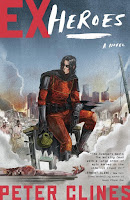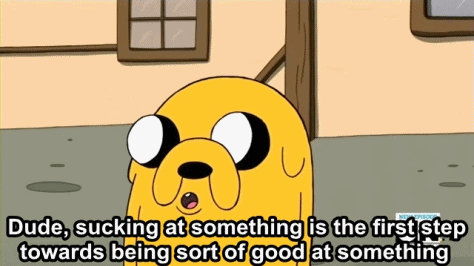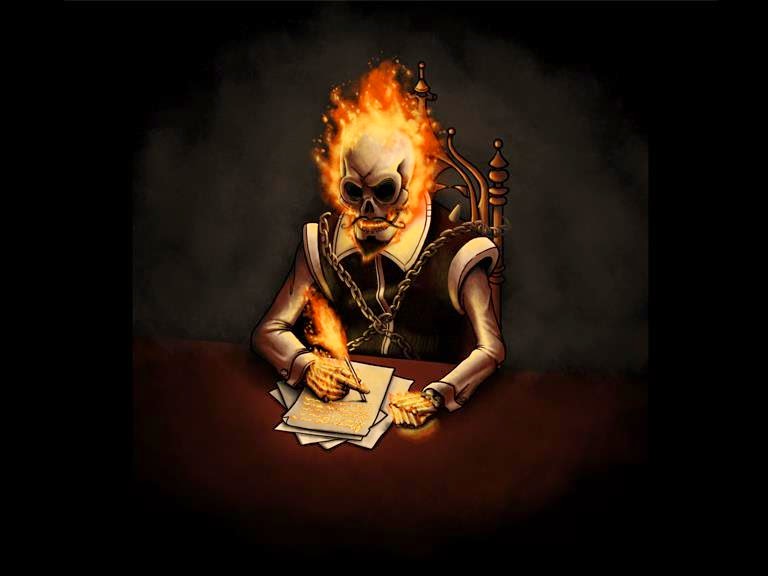Personally, I’d rewrite my cover letter after every fourth or fifth rejection. Sometimes it would be to update it with a new sale or credit. Other times I’d come up with a cleaner, slicker way to get a point across. All too often, it was to fix the typo that had slipped past three revisions and didn’t get noticed until after I sent things out. Whatever made me do it, it was rare for more than a handful of editors to get the exact same letter from me. And different people interpret those letters different ways
Category: feedback
June 23, 2016 / 3 Comments
Rejected by Inspector #12
January 10, 2015
The Friends and Family Plan
Running a little late. Sorry.
Hey, last week there were two posts in a row. You’ll survive. Really.
Anyway, let’s talk about the system you’re using.
I think one of the harder things to find is an honest opinion. Odd to say, I know, with all the folks who like to shout about the truth on the internet, but I think there’s a certain level of honesty that’s difficult to get from people. Most of us don’t like saying “No.” Everyone worries about offending someone and the possible ramifications it could have, especially these days when so many comments are taken out of context and so many folks are ready and waiting to be offended by… well, anything.
My time in Hollywood taught me that a lot of folks have almost brainwashed themselves against saying “no” or offering any kind of negative feedback. My differing opinion can get me fired, after all, so I keep it to myself. The person asking “Do you like this?” could end up deciding whether or not I get health insurance and a new office next year, even if they’re just the office PA right now. They don’t always say yes, but pretty much nobody says no. No is all but forbidden.
Unless you’re one of the lucky few who has a partner, writing is something we have to do alone. The odd conundrum here is that one of the very few ways we can improve as writers is to get feedback. People need to read our work and express their thoughts and opinions about it. I need to have an audience. A real audience.
What counts as a real audience? Well, it’s people who will give me an honest opinion. People who are willing to say no. A solid beta reader, as they’re often called, won’t mince words or spare my feelings, because they understand I need to know what’s wrong with my work so I can improve it. Kindness and white lies don’t help me at all. They only undermine my attempts to get better.
A little story…
 When I was a kid, my mom read pretty much every piece of half-finished crap I wrote. And believe me, I wrote a lot of it. She slogged through at least three versions of Lizard Men from the Center of the Earth between third and seventh grade. There were also a few good-sized pieces of Boba Fett and Doctor Who fanfic (long before there was such a term). Plus a bunch of short stories and a truly awful sci-fi “novel” called A Piece of Eternity that had cosmic rays and mutants and cute little robots and bug-aliens that were shamelessly ripped off from the old Marvel Micronauts comics.
When I was a kid, my mom read pretty much every piece of half-finished crap I wrote. And believe me, I wrote a lot of it. She slogged through at least three versions of Lizard Men from the Center of the Earth between third and seventh grade. There were also a few good-sized pieces of Boba Fett and Doctor Who fanfic (long before there was such a term). Plus a bunch of short stories and a truly awful sci-fi “novel” called A Piece of Eternity that had cosmic rays and mutants and cute little robots and bug-aliens that were shamelessly ripped off from the old Marvel Micronauts comics.
Now, there’s no question in my mind that I wouldn’t be where I am today if my mom hadn’t kept reading this stuff and encouraging me to write more. None at all.
However…
I eventually realized something. My mom was pretty much always going to say she liked what I was writing because she’s my mom and that’s what good mothers do. It didn’t matter if the material was good, bad, or borderline nonsensical, my mom would congratulate me on it.
Which is when I realized I needed to start getting other opinions.
Now, granted, this is an extreme example. I’m not saying my mother should’ve told the eleven-year-old me that my writing was childish and predictable and I didn’t have a chance of ever getting published. That would’ve just been cruel, and also a bit unfair. In one way, this blind kindness was a good thing.
However, this kindness can also be a trap. And many people, willingly or not, fall into it.
Dot, for example, surrounds herself with people who won’t give her honest opinions. She’ll only show her writing to immediate family members, or friends who are so close they’ve got all the same interests and background. Parents, siblings, friends, lovers—people with a strong desire not to hurt her feelings, and, on some level, a vested interest in keeping her happy.
Is it really that surprising to learn these people all say Dot’s writing is great. Her mom and dad think it’s wonderful. Her friends got all the jokes. Her brother Yakko loves it. Her boyfriend (or maybe girlfriend—Dot’s very open-minded) thinks she should send it out to some magazines or agents.
Are they all lying to her? Possibly not. There’s always that chance Dot is the next Harper Lee or Ernest Hemingway, unable to produce anything except Pulitzer-level material when left alone with a word processor. Maybe she really is a writing savant, able to put down words on the first try that are going to make the Nobel Committee weep tears of joy.
But, as they say in Vegas, I wouldn’t put money on it.
Worse yet, sometimes these well-meaning folks will tell Dot to ignore the good criticism she is getting. Did Phoebe’s feedback sting a bit? Did it make Dot question her abilities a little? Well, just ignore it. What does she know, anyway? She’s just one person, and she’s probably jealous of Dot’s talent. That’s why she’s tearing the story apart like that.
We all start out rough. Our first works suck. Usually our second works, too. But we can’t get past that until we admit it and really consider some of the feedback we’re getting… and the people we’re getting it from.
Finding a real, honest audience for your work can take years. Some folks mean well, but are coming from a place of no education and/or no experience. A few of those folks are coming with no education or experience and they’ll ask you for money. And some of them… well, let’s be honest. Some people are just jerks. They like to look down their noses and criticize people—sometimes for no real reason, sometimes so they can feel superior. They’ll give an opinion and expect you to treat it as fact.
Over the years since Mom read all my stories, out of the hundreds of people I’ve met in the film and publishing industry, I’ve found maybe a double handful of people whose opinions I really trust. They have the education, they have the experience, and at the end of the day they want to see my writing improve almost as much as I do. Several of them are merciless and blunt to a point that could make small children cry, and I consider myself lucky for that.
And, for the record, Mom still likes a lot of my stuff, too. But she only sees the final version.
Speaking of my mom, next time I’d like to tell you my story. It’s the most interesting thing ever. Really.
Until then, go write.
October 17, 2014 / 3 Comments
My Thoughts On Criticism
 –or with some similar (or more emphatic) phrasing, my critique probably isn’t that objective. I’m not offering advice based on facts or rules, just off my own opinion. And while opinion has a place in criticism, it’s also something that needs to be weighed and ignored sometimes.
–or with some similar (or more emphatic) phrasing, my critique probably isn’t that objective. I’m not offering advice based on facts or rules, just off my own opinion. And while opinion has a place in criticism, it’s also something that needs to be weighed and ignored sometimes.Next time, I absolutely swear, Clint Eastwood.
Until then, go write.
April 24, 2014 / 2 Comments
Draft Bored
 The goal with this draft is to have a readable manuscript. No more little notes to myself or trailing paragraphs that need to get connected somehow. Someone should be able to pick this up and read it start to finish without thinking they lost a few pages or only got my notes on a chapter.
The goal with this draft is to have a readable manuscript. No more little notes to myself or trailing paragraphs that need to get connected somehow. Someone should be able to pick this up and read it start to finish without thinking they lost a few pages or only got my notes on a chapter. At this point I’ve gone through the whole manuscript at least twice, so a few larger cuts should be apparent, too. Overcomplicated descriptions that slow down the narrative. Awkward sentence structures. Extensive character moments that really add nothing to the character, the story, or the plot. Many of these things get tightened or cut altogether.
At this point I’ve gone through the whole manuscript at least twice, so a few larger cuts should be apparent, too. Overcomplicated descriptions that slow down the narrative. Awkward sentence structures. Extensive character moments that really add nothing to the character, the story, or the plot. Many of these things get tightened or cut altogether. Page one… what did everyone think? What about page two? How’s page three look? As I’m doing this, I’ve also got my own copy of the fourth draft that I’m using as a “master document.” This way I can see all the notes and make whatever changes are required.
Page one… what did everyone think? What about page two? How’s page three look? As I’m doing this, I’ve also got my own copy of the fourth draft that I’m using as a “master document.” This way I can see all the notes and make whatever changes are required. 





